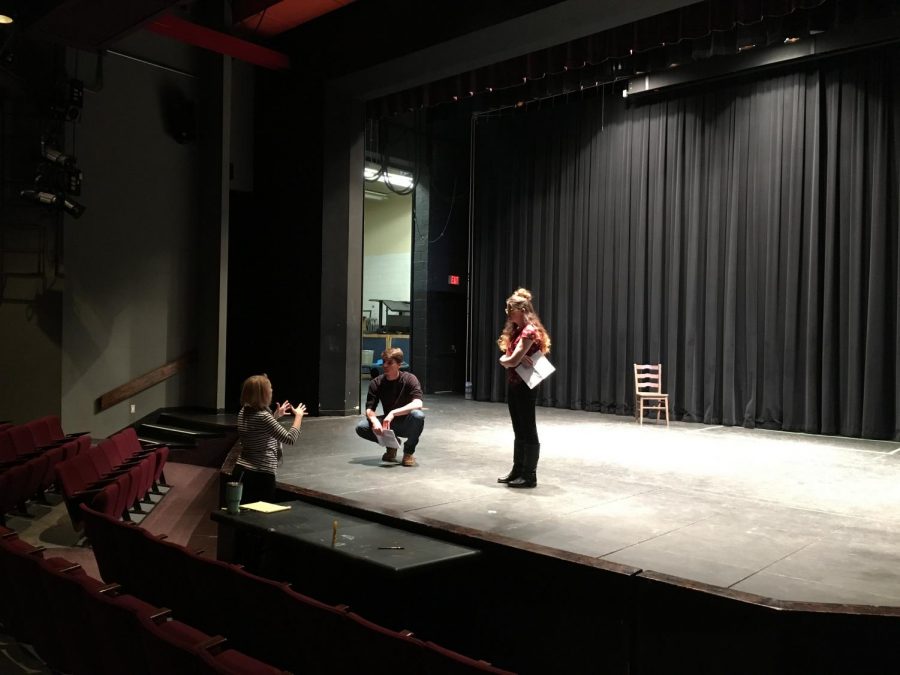The Road to ‘Romeo & Juliet’: Student Actors Brave the Cold to Warm Up for Auditions
“Romeo and Juliet” director, Dr. AnnMarie T. Saunders preps for the next student.
February 6, 2019
Auditions began last Thursday night for AACC’s spring play, “Romeo and Juliet.”
Students in the waiting area ranged in experience from one previous audition to as many as 45.
Kennedy Cole, a high school student in the Early College Access Program, noted that the arrows on the floor leading from the lobby to the center stage were a new addition.
Jake Schwartz, a second-year student from the University of Maryland, said “I like all the arrows” as he followed them up to center stage.
Dr. AnneMarie T. Saunders, a Theater and Directing professor as well as the play’s director, smiled encouragingly as Schwartz walked to his light and prepared to perform. “We tried to make it easy,” she said and the audition began.
Schwartz instantly transformed into the spurned lover, Claudio, from “Much Ado About Nothing,” crying out, “Give not this rotten orange to your friend!”
Saunders and her assistant director, AACC student Jonas Pallaro-Sonneborne, silently assessed the student’s performance.
Saunders then informed Schwartz about callbacks. “Are you available Saturday at noon?” She asked. “Hell yeah,” he responded, returning to the playful student. “Can I walk backward on the arrows?”
Back in the waiting area, students Shayna Bloom and Alan Cole, and AACC Alumni Jack Venton, practiced their monologues.
Bloom was successfully cast previously in “The Addams Family.”
She advised less experienced students to find a “focus spot” once on stage.
“If looking at an audience makes you nervous, then aim your lines at that spot and it will calm you down,” she said.
Venton had his first audition at eight years old.
“This is more complex,” he said. “But I still try to put as much energy into it as I did then.”
Venton stated that he liked the character of Mercutio in “Romeo and Juliet.”
“I feel like he has a better head on his shoulders,” he said. “But I wouldn’t mind playing Romeo because he has more stage time.”
Cole said she wouldn’t mind playing Mercutio as well.
“I feel I can really connect to him,” she said. “He is one of those friends who helps to guide Romeo through life.”
Saunders said one reason for choosing “Romeo and Juliet” was because students could connect to it.
“We wanted to do something classical, so students can explore different types of theatre during their time here.”
She said the faculty wanted to perform a Shakespearean play that was familiar but not overdone like “A Midsummer Night’s Dream.”
“Romeo and Juliet” may be familiar, but Saunders explained she was going to try something different and yet still Shakespearean.
“One of the things we’re looking at having an ensemble of actors play multiple characters,” she said. “It will be a good experience because the actor will have to make distinct character choices.”
“[Actors] have to make those decisions to help the audience follow the story,” she said.
Pallaro-Sonneborne will help adapt the script, focusing on the universal themes in the play.
Saunders feels the play is relevant today because of the powerful message that “the things that keep us apart are not worth it.”
Ultimately, Saunders felt everyone will connect with the love story.
“Whether the love is something that lasts forever or just a moment, it is still lovely,” she said with a smile.
“Romeo and Juliet” opens Friday, April 12.












